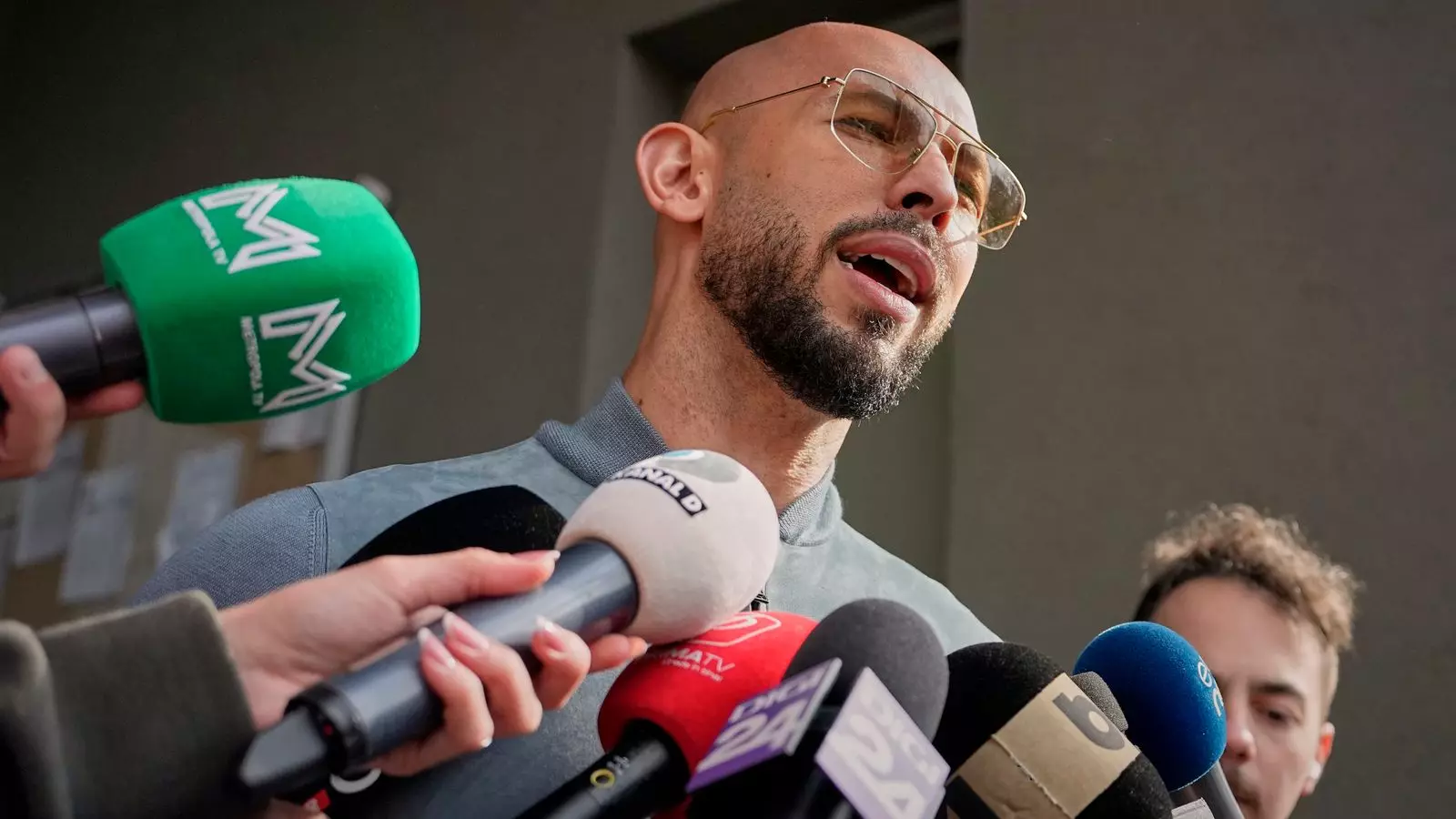In recent years, the landscape of education has been significantly altered by the rise of social media and digital influencers. A concerning report from the NASUWT teaching union reveals that more than half of UK teachers perceive a direct correlation between social media use and declining student behavior in classrooms. This isn’t just a minor issue; it represents an alarming increase in misogyny and sexism among young students, spurred by the likes of notorious figures such as Andrew Tate. This phenomenon illuminates a grim truth: influence is a powerful weapon, and when wielded irresponsibly, it can foster toxic attitudes that seep into the very foundations of our educational institutions.
According to the survey, a staggering 59% of educators believe that the normalization of unhealthy male-female interactions, exacerbated by social media personalities, has led to a deterioration in behavior among school-aged children. The example of Andrew Tate stands out—this self-proclaimed influencer not only undermines genuine masculinity but also fosters an environment where misogyny can thrive unchecked. Instances cited by teachers highlight a disturbing trend where young boys feel emboldened to reject female authority figures, refusing to engage with them purely based on gender.
The Realities of Classroom Dynamics
The ramifications of these newfound attitudes go beyond mere rudeness; they reflect a societal shift that intertwines education with toxic masculinity. One teacher recounted incidents where ten-year-olds, intoxicated by Tate’s ideologies, refused to acknowledge her authority simply because she is a woman. This type of behavior is not isolated; it reverberates through classrooms across the nation, replacing respect and civility with a veneer of bravado and sexism. What once constituted innocent childhood banter is now hijacked by a narrative that diminishes the value of women and propagates harmful stereotypes.
Moreover, the normalization of derogatory language directed toward female staff by students is not just an unfortunate anecdote; it is a harbinger of what happens when influence goes unchecked. As children immerse themselves in environments heavily laden with toxic content, the classroom becomes a breeding ground for beliefs that could potentially spiral into more severe acts of discrimination as they mature.
The Role of Political and Social Accountability
In light of these issues, there is a pressing need for a collective response from educators, lawmakers, and social media platforms alike. Political figures like Prime Minister Keir Starmer acknowledge the urgency of addressing this issue, convening discussions to combat the infiltration of hatred into the minds of young boys. The tragic circumstance surrounding Tory leader Kemi Badenoch, who experienced a personal tragedy stemming from social media’s influence, sheds light on the broader implications of this crisis. Her advocacy for reevaluating the role of social media presents a pivotal opportunity for change, as it drives home the message that these platforms can create a cesspool of harmful ideologies.
Yet, while calls for change are critical, they must be coupled with concrete actions. Patrick Roach, General Secretary of the NASUWT, emphasizes that teachers should not shoulder this burden alone. It is imperative that schools collaborate with other institutions to confront the rise of far-right movements and the populist narratives they propagate. The idea of safeguarding young minds should translate not only into conversations but into actionable policies that can reshape the educational landscape.
Education as the Antidote to Hatred
The Department for Education has commented on the need for education to act as an antidote to hate, advocating for classrooms as safe havens encouraging critical dialogue around sensitive topics. However, this idealism must be grounded in reality. It is not enough to merely state the importance of education in combating misogyny; it requires an overhaul of the very systems that allow toxic ideologies to proliferate in the first place.
To truly foster an environment free from the corrosive effects of influencer culture, educators must be equipped with tools and resources that empower them to address issues of misogyny head-on. This involves not only addressing student behavior but also critically engaging with the digital content they consume. It invites a holistic approach where discussions about respect, equality, and nuance are paramount.
The echoes of unchallenged misogyny within our classrooms demand immediate action. It is high time that we recognize the profound impact of influencer culture on the younger generation and take genuine steps to establish a supportive educational framework that champions equality, respect, and understanding.


Leave a Reply